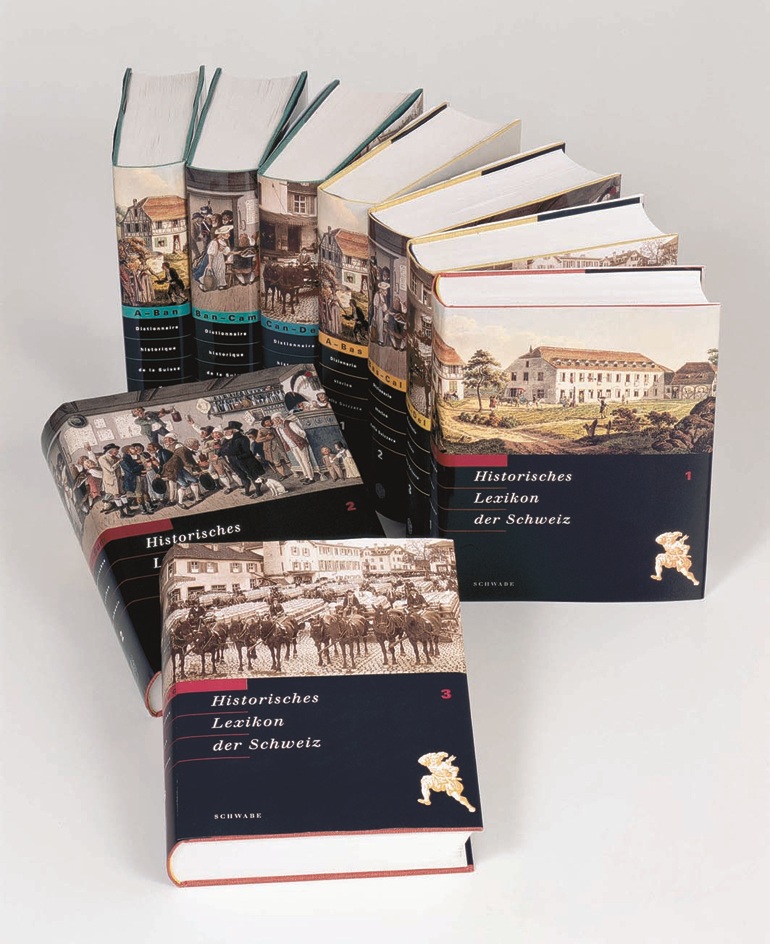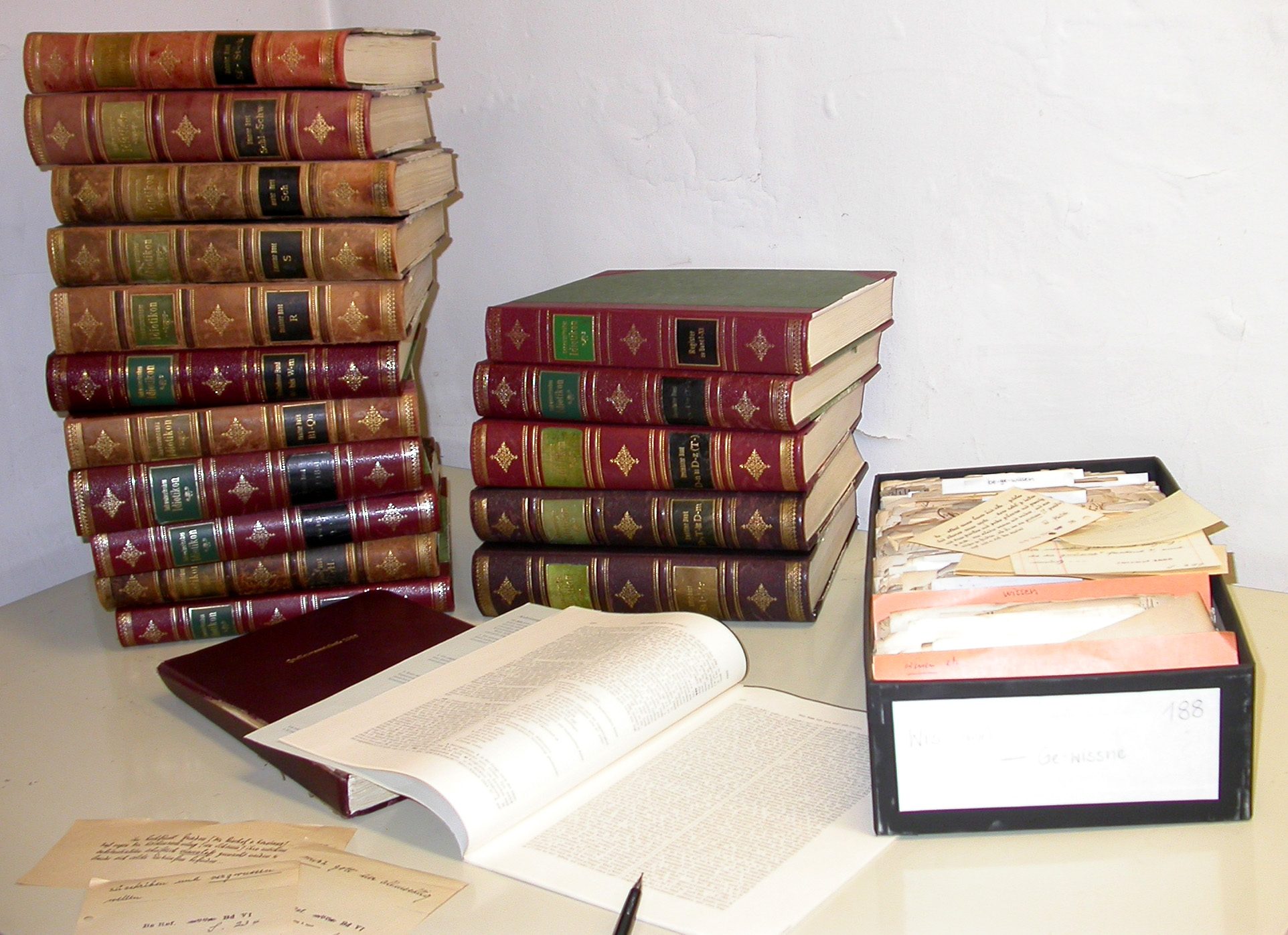|
Dicziunari Rumantsch Grischun
The ''Dicziunari Rumantsch Grischun'' (abbreviation DRG) is the biggest dictionary of the Romansh language. Founded in 1904 by the Indo-Europeanist Robert von Planta and the Societad Retorumantscha, which still bears the responsibility for editing it. It comprises the Romansh dialects and idioms spoken in the Swiss canton of Graubünden. The term ''Rumantsch Grischun'' means "the Romansh language spoken in Graubünden" and should not be confused with the standard written language (Dachsprache) created in the 20th century with the name of Rumantsch Grischun. The first 13 volumes of the Romansh dictionary became available online in December 2018. The digitalization of the dictionary was done by hand-typing in Nanjing, China, due to the expensive cost in Europe. Bibliography * ''Annalas da la Societad Retorumantscha,'' 1886 ff. References External links Dicziunari Rumantsch Grischunat the Lexicon Istoric Retic Dictionaries by language Romansh language {{r ... [...More Info...] [...Related Items...] OR: [Wikipedia] [Google] [Baidu] |
Dictionary
A dictionary is a listing of lexemes from the lexicon of one or more specific languages, often arranged alphabetically (or by radical and stroke for ideographic languages), which may include information on definitions, usage, etymologies, pronunciations, translation, etc.Webster's New World College Dictionary, Fourth Edition, 2002 It is a lexicographical reference that shows inter-relationships among the data. A broad distinction is made between general and specialized dictionaries. Specialized dictionaries include words in specialist fields, rather than a complete range of words in the language. Lexical items that describe concepts in specific fields are usually called terms instead of words, although there is no consensus whether lexicology and terminology are two different fields of study. In theory, general dictionaries are supposed to be semasiological, mapping word to definition, while specialized dictionaries are supposed to be onomasiological, first identifying ... [...More Info...] [...Related Items...] OR: [Wikipedia] [Google] [Baidu] |
Nanjing
Nanjing (; , Mandarin pronunciation: ), alternately romanized as Nanking, is the capital of Jiangsu province of the People's Republic of China. It is a sub-provincial city, a megacity, and the second largest city in the East China region. The city has 11 districts, an administrative area of , and a total recorded population of 9,314,685 . Situated in the Yangtze River Delta region, Nanjing has a prominent place in Chinese history and culture, having served as the capital of various Chinese dynasties, kingdoms and republican governments dating from the 3rd century to 1949, and has thus long been a major center of culture, education, research, politics, economy, transport networks and tourism, being the home to one of the world's largest inland ports. The city is also one of the fifteen sub-provincial cities in the People's Republic of China's administrative structure, enjoying jurisdictional and economic autonomy only slightly less than that of a province. Nanjing has be ... [...More Info...] [...Related Items...] OR: [Wikipedia] [Google] [Baidu] |
Lexicon Istoric Retic
The ''Historical Dictionary of Switzerland'' is an encyclopedia on the history of Switzerland that aims to take into account the results of modern historical research in a manner accessible to a broader audience. The encyclopedia is published by a foundation under the patronage of the Swiss Academy of Humanities and Social Sciences (SAGW/ASSH) and the Swiss Historical Society (SGG-SHH) and is financed by national research grants. Besides a staff of 35 at the central offices, the contributors include 100 academic advisors, 2500 historians and 100 translators. Print edition The encyclopedia is published simultaneously in three of Switzerland's national languages: German (''Historisches Lexikon der Schweiz'', HLS, in red), French French (french: français(e), link=no) may refer to: * Something of, from, or related to France ** French language, which originated in France, and its various dialects and accents ** French people, a nation and ethnic group identified with Fr ... [...More Info...] [...Related Items...] OR: [Wikipedia] [Google] [Baidu] |
Chur
, neighboring_municipalities= Arosa, Churwalden, Tschiertschen-Praden, Domat/Ems, Felsberg, Malix, Trimmis, Untervaz, Pfäfers , twintowns = Bad Homburg (Germany), Cabourg (France), Mayrhofen (Austria), Mondorf-les-Bains (Luxembourg), Terracina (Italy) '' Chur (, locally ; it, Coira ; rm, label= Sursilvan, Cuera ; rm, label=Vallader, Cuoira ; rm, label= Puter and Rumantsch Grischun, Cuira ; rm, label=Surmiran, Coira; rm, label= Sutsilvan, Cuera or ; french: Coire ) la, CVRIA, and . is the capital and largest town of the Swiss canton of the Grisons and lies in the Grisonian Rhine Valley, where the Rhine turns towards the north, in the northern part of the canton. The city, which is located on the right bank of the Rhine, is reputedly the oldest town of Switzerland. The official language of Chur is German,In this context, the term "German" is used as an umbrella term for any variety of German. A person is allowed to communicate with the authorities by using any ... [...More Info...] [...Related Items...] OR: [Wikipedia] [Google] [Baidu] |
Schweizerisches Idiotikon
''Schweizerisches Idiotikon'' ("the Swiss idioticon", also known as ''Wörterbuch der schweizerdeutschen Sprache'' "Dictionary of the Swiss German language") is an ongoing, major project of lexicography of the Swiss German dialects. Publication began in 1881 and is projected to be complete by 2022. Its scope includes the language since the end of the classical Middle High German period (13th century) and as such also represents the historical dictionary of the dialects of German-speaking Switzerland, and is one of the most detailed treatments of the Early Modern High German language in general. As of 2010, it contains 150,000 words. The history of the project began in 1862 with the foundation of a ''Verein für das Schweizerdeutsche Wörterbuch'', led by Friedrich Staub (1826–1896). Originally envisaged as a dictionary in four volumes, the first fascicle was published in 1881. From 1896, the project was led by Albert Bachmann (philologist), Albert Bachmann (1863–1934), ... [...More Info...] [...Related Items...] OR: [Wikipedia] [Google] [Baidu] |
Rumantsch Grischun
Romansh (; sometimes also spelled Romansch and Rumantsch; Sursilvan: ; Vallader, Surmiran, and Rumantsch Grischun: ; Putèr: ; Sutsilvan: , , ; Jauer: ) is a Gallo-Romance language spoken predominantly in the Swiss canton of the Grisons (Graubünden). Romansh has been recognized as a national language of Switzerland since 1938, and as an official language in correspondence with Romansh-speaking citizens since 1996, along with German, French, and Italian. It also has official status in the canton of the Grisons alongside German and Italian and is used as the medium of instruction in schools in Romansh-speaking areas. It is sometimes grouped by linguists with Ladin and Friulian as the Rhaeto-Romance languages, though this is disputed. Romansh is one of the descendant languages of the spoken Latin language of the Roman Empire, which by the 5th century AD replaced the Celtic and Raetic languages previously spoken in the area. Romansh retains a small number of words ... [...More Info...] [...Related Items...] OR: [Wikipedia] [Google] [Baidu] |
Romansh Language
Romansh (; sometimes also spelled Romansch and Rumantsch; Sursilvan: ; Vallader, Surmiran, and Rumantsch Grischun: ; Putèr: ; Sutsilvan: , , ; Jauer: ) is a Gallo-Romance language spoken predominantly in the Swiss canton of the Grisons (Graubünden). Romansh has been recognized as a national language of Switzerland since 1938, and as an official language in correspondence with Romansh-speaking citizens since 1996, along with German, French, and Italian. It also has official status in the canton of the Grisons alongside German and Italian and is used as the medium of instruction in schools in Romansh-speaking areas. It is sometimes grouped by linguists with Ladin and Friulian as the Rhaeto-Romance languages, though this is disputed. Romansh is one of the descendant languages of the spoken Latin language of the Roman Empire, which by the 5th century AD replaced the Celtic and Raetic languages previously spoken in the area. Romansh retains a small number of words fro ... [...More Info...] [...Related Items...] OR: [Wikipedia] [Google] [Baidu] |
Dachsprache
In sociolinguistics, an abstand language is a language variety or cluster of varieties with significant linguistic distance from all others, while an ausbau language is a standard variety, possibly with related dependent varieties. Heinz Kloss introduced these terms in 1952 to denote two separate and largely independent sets of criteria for recognizing a "language": * one based on linguistic properties compared to related varieties (german: Abstand, , "distance") * the other based on sociopolitical functions (german: Ausbau, , "expansion") This framework addresses situations in which multiple varieties from a dialect continuum have been standardized, so that they are commonly considered distinct languages even though they may be mutually intelligible. The continental Scandinavian languages offer a commonly cited example of this situation. One of the applications of this theoretical framework is language standardization (examples since the 1960s including Basque and Romansh). ... [...More Info...] [...Related Items...] OR: [Wikipedia] [Google] [Baidu] |






